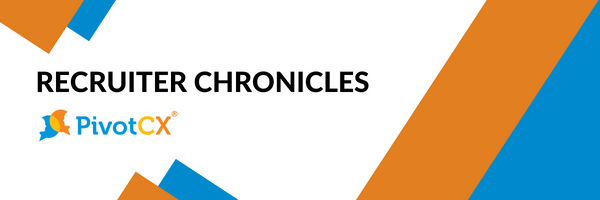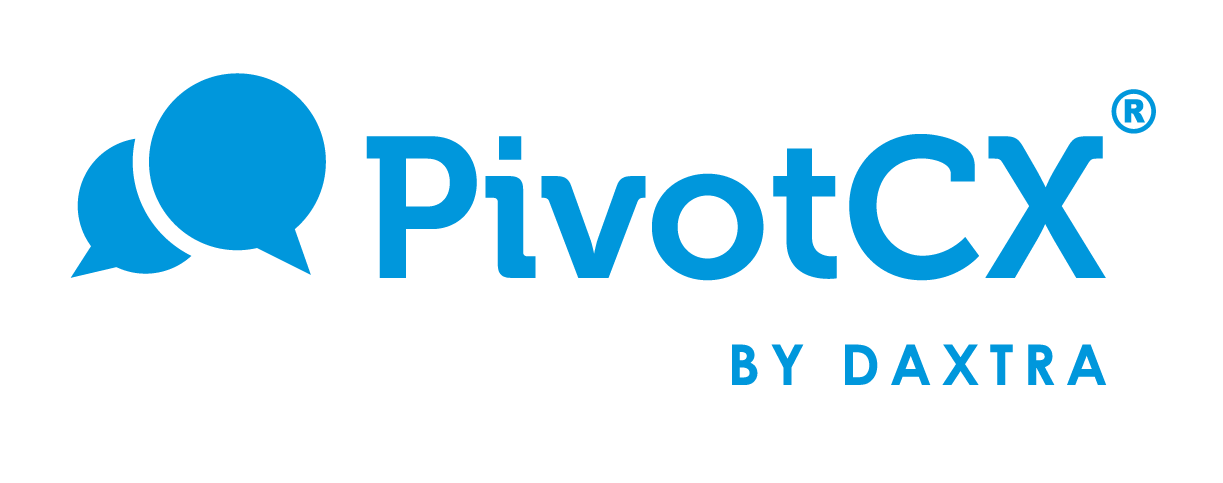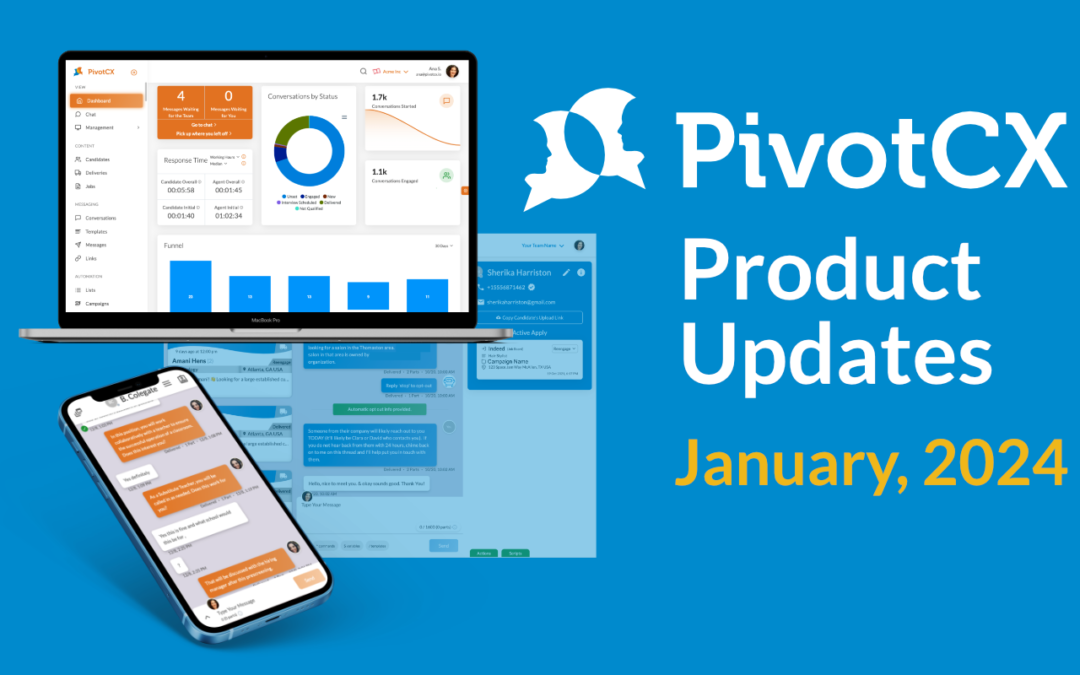
Recruiter Chronicles – January, 2024
Happy New Year! We’re ready to start this year strong with even more features, updates, and even some bug fixes to make your recruiting easier.
In this month’s issue of The Recruiter Chronicles, we share with you some of the latest feature updates for PivotCX, a blog post on our Templates feature, and a recording of our most popular webinar to date about the mindset of the Modern Candidate.
New Product Updates and Fixes
Here’s an overview of some of the latest prominent changes and fixes.
We’ve added various new features and fixed many different bugs in the past month. Here are just a few of the more prominent changes:
1. Keywords now have their own tab and can be associated with job requisitions.
2. Job feeds can now be pulled directly from the Feeds tab in the Team Settings.
3. Power event displays with the Text Wall Feature.
4. You can now directly edit attribution/apply fields form the chat window.
Check out these changes and more in the full release notes here.
Feature Highlight: Templates
Each month, we’ll showcase a core feature that exemplifies how we translate our mindset and approach to transforming the Recruiting Process to optimize the experience for all participants and maximize the ROI you can achieve with PivotCX. This month, we’re excited to showcase our Re-usable Template feature. Read about these 3 reasons why you and your recruiters should be using templates.
Read more about templates here
Getting in the Mind of the Modern Candidate
Our most popular webinar to date has recruiters talking! It can take as little as 15 minutes for you to make a $40,000 purchase of a new car, and yet it takes companies 2-3 months on average to fill a single opening. Why is there such a disconnect between our daily consumer experience and getting a job? What can recruiters do to meet modern candidate expectations?
Watch the full recording here
Partner Spotlight: TalentNet Media
In addition to PivotCX developing the most robust Recruiting Communication Hub in the industry, we also work hard to curate a set of partners (both Technology and Service) that further enhance the native functionality delivered. Each month we’ll focus the spotlight on a partner that is dedicated to serving the additional needs of our customers, and to further maximize the ROI on their investment in PivotCX. This month, we’re proud to feature, TalentNet Media (insert hyperlink to the full spotlight post), a specialized consulting company focused on everything related to Talent Acquisition.
Your content goes here. Edit or remove this text inline or in the module Content settings. You can also style every aspect of this content in the module Design settings and even apply custom CSS to this text in the module Advanced settings.






